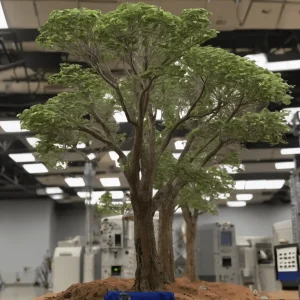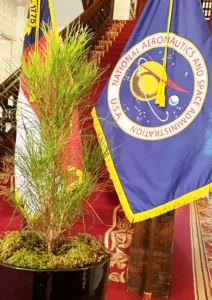In a recent announcement, NASA revealed plans to find new homes for the Artemis Generation of ‘Moon Trees’ across the United States. Moreover, this initiative aims to honor the legacy of the original Moon Trees planted from Apollo 14 seeds. These iconic trees, grown from seeds that journeyed to the Moon and back during the Apollo missions, hold a special place in the hearts of space enthusiasts and nature lovers alike. Let’s delve into the captivating story behind these unique trees and their journey from space to Earth.
The Legacy of Moon Trees

NASA’s Apollo missions (late 1960s/early 1970s) ventured to the Moon, sparking the Moon Tree project. Astronauts carried seeds on these groundbreaking journeys. The seeds orbited the Moon aboard the command module before being returned to Earth with the astronauts.
After returning from the Moon, scientists carefully germinated and nurtured the seeds into saplings. Consequently, these trees, representing a variety of species including loblolly pine, sycamore, sweetgum, and Douglas fir, quickly became symbols of the remarkable achievements of the Apollo program and the spirit of exploration that defined the era.
Finding New Homes

NASA initiated a nationwide search for suitable locations as the original generation of Moon Trees reached the end of their natural lifespan. The Artemis Generation, honored by NASA’s Artemis program, will soon find their new homes. These iconic trees will continue to inspire and educate future generations about space exploration.
As the original generation of Moon Trees reached the end of their natural lifespan, NASA initiated the selection process for the new planting sites, which involved careful consideration of factors such as environmental conditions, community engagement, and historical significance.
NASA partnered with local organizations and communities to find suitable planting locations for the Artemis Generation Moon Trees. These locations will ensure the public can enjoy and appreciate the trees for years.
This collaborative effort aimed to maximize the impact of these iconic trees and promote awareness of NASA’s lunar exploration missions. The chosen sites strike a balance between natural beauty and cultural significance and embody the spirit of exploration and environmental stewardship.
Inspiring Future Generations
The planting of Moon Trees is a powerful reminder of the intersection between space exploration and environmental stewardship. Additionally, by preserving and commemorating these living relics of space history, NASA aims to inspire future generations. It encourages them to pursue careers in science, technology, engineering, and mathematics (STEM) and cultivates a deeper appreciation for the natural world.
- The Artemis Generation of Moon Trees isn’t just about finding new homes; it’s about something much bigger. These lunar travelers embody humanity’s enduring spirit of exploration and discovery. They symbolize our collective aspirations and dreams of venturing further into the cosmos just as NASA embarks on its mission to return humans to the Moon and beyond.
Conclusion:
Exciting news indeed! The Artemis Generation of Moon Trees has found permanent homes across the United States. These particular trees, flown around the Moon on Artemis I, mark a new chapter in space exploration. As they take root in communities nationwide, they’ll become living symbols of human ingenuity, curiosity, and perseverance. Transitioning into a celebration, let’s acknowledge the spirit of exploration these Moon Trees embody. May they inspire us to continue gazing at the stars with hope and wonder.














